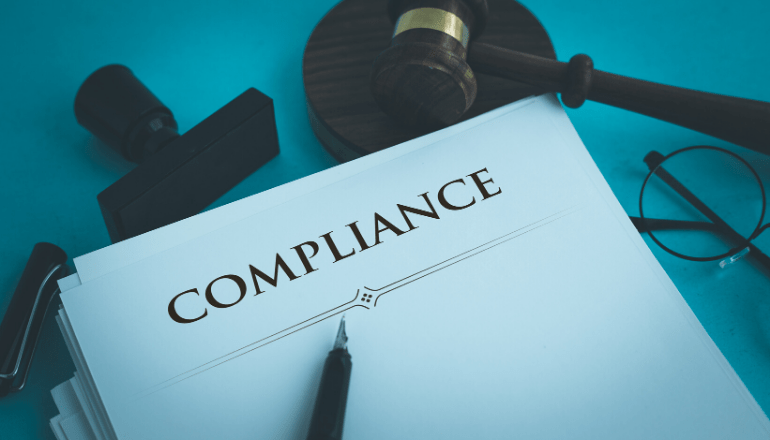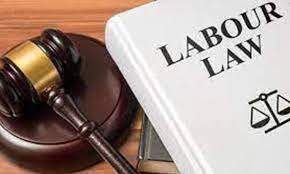
Corporate Insolvency Resolution Process for Creditors Approval
Insolvency and Bankruptcy Code that came into effect in the financial year 2016, has been the most effective code for the insolvency creditors for proceedings in India.
One can even state that the invention of the code has been revolutionary for the banking sector, given, the state of haphazard and the industry finds itself in. it can also be maintained that with the advent of the code, the industry saw the demise of the laws for liquidation and insolvency in the Indian bankruptcy regime.
But given that even the IBC brings to the table the option for liquidation, how exactly is the code different from the prior process of liquidation?
It is to be noted that the crux of the code encapsulates effective objectives like maximizing the value of assets of a corporate which were barely recoverable under the arcane laws and emphatically ease the businesses by effectively minimizing the financial risk in business.
Thus, it can be effectively stated that the code significantly improves the condition of the financially distressed company by recovering its value through its effective time-bound manner of work. Even though the IBC helps in the recovery of payments from the defaulter, its main focus is on the relief of the creditors of the company.
 It is worth mentioning here that under the Corporate Insolvency Resolution Process, the creditors have placed ion the pinnacle of utmost importance. Thus, given its newfound, enhanced role, the committee of creditors has been emphatically seen playing a major role in the regime of insolvency.
It is worth mentioning here that under the Corporate Insolvency Resolution Process, the creditors have placed ion the pinnacle of utmost importance. Thus, given its newfound, enhanced role, the committee of creditors has been emphatically seen playing a major role in the regime of insolvency.
In fact, If the procedure is to be believed, the committee of creditors wields the utmost power and is effectively considered the supreme decision-making body in the Corporate Insolvency Resolution Process. Thus, one cannot help but note here that the effective decisions by the committee will affect the resolution of the insolvency of the corporate debtor.
 Under particular regulation 21 of the code, the committee of creditors finds the seed of its formation. According to the code, the committee of creditors shall emphatically and strategically comprise all the financial creditors of the corporate debtor.
Under particular regulation 21 of the code, the committee of creditors finds the seed of its formation. According to the code, the committee of creditors shall emphatically and strategically comprise all the financial creditors of the corporate debtor.
To remove the barrier and the arbitrariness of distinction, the code also effectively makes a clear distinction between the financial creditors and the operational creditors. If a financial creditor is to be solemnly described, it effectively means anyone to whom the debt along with interest is owed. On the other hand, an operational creditor is one who has debts related to the supply of services and goods.
 The power-wielding committee of creditors
The power-wielding committee of creditors
As aforementioned, the committee of creditors is described as the supreme decision-making body. Thus, all the major or humungous decisions about the company are effectively taken with the approval of the committee.
Therefore, one can state that the committee of creditors has a humungous authority to affect the insolvency process. This is also due to the fact that the committee can call the shots on sensitive topics like whether or not to restore the corporate debtor by strategically accepting any resolution plan.
In fact, it is worth mentioning here that the committee of creditors has the supreme power of approving the proposed resolution plan. This strongly indicates the fact that the committee has an undue influence on the insolvency process, which will be tackled on its whims and decisions, thus, deciding the fate and the regular functioning of the corporate debtor.
In fact, it is also worth mentioning here that the committee of creditors also enjoys the authority to approach the adjudicating authority. This can be done in the case of any foul play event that can be detected by the committee. This emphasizes the fact that the conditions of foul play and what determines it will be emphatically be decided by the committee, which surely puts humungous, undue power in the hands of the committee to sway the decision-making in the insolvency process.
 The authority can also be effectively evaluated from the fact that the co9mmitee can also choose to proceed with the liquidation of the corporate debtor by not approving any resolution plan.
The authority can also be effectively evaluated from the fact that the co9mmitee can also choose to proceed with the liquidation of the corporate debtor by not approving any resolution plan.
Thus, in a gist, it can be stated that the insolvency process depends heavily on the commercial wisdom of the committee while taking any decision for the corporate debtor.
This is because it is staunchly believed that the committee of creditors has better knowledge to mediate and analyze the debilitated situation of the company.
Thus, one can effectively argue that the committed creditors have been vested with immense powers under the insolvency and bankruptcy code,2016.
With immense power bestowed on one committee, it can be stated that effects on the resolution of a company under distress can be immense and humungous.

With even a little whimsical attitude, one can conjure that it will have a negative impact on the financial health of the company that will nonetheless affect the process of insolvency in due course. But on the other hand, one can also maintain that if the creditors can take absolute control of the management of the corporate debtor, important decisions and the resolutions plan can be passed in a timely, swift manner which can help recover a larger value of the assets and will thus ease the financial risk in a company.
Thus, if the power is to be used sagaciously and prudently, one can expect such creditor-in-control model management to usher the banking sector into a stronger bankruptcy regime in India.
Terms related to the article:
innovation pharmaceuticals, innovation pharma, pharma innovation, innovation in pharmaceutical industry, the pharma innovation, pharmaceutical innovations, innovative business ideas in pharma, innovative ideas in pharmaceutical industry, innovation in pharmaceutical technology, the corporate insolvency resolution process



 Quite interestingly, India is not the only country that is in the race to regulate contentious digital assets. Given the difference in policymaking in different countries, the groupings emphatically have their own ways of regulating cryptocurrencies.
Quite interestingly, India is not the only country that is in the race to regulate contentious digital assets. Given the difference in policymaking in different countries, the groupings emphatically have their own ways of regulating cryptocurrencies.
 Having talked about the US and the UK, it would be a gross error to not indulge in the subject of crypto regulations in the European Union. In comparison to the UK and the US, Legislation in the European Union is a complicated matter. This is due to the fact that some topics are being dealt with by the Union and some by the member states.
Having talked about the US and the UK, it would be a gross error to not indulge in the subject of crypto regulations in the European Union. In comparison to the UK and the US, Legislation in the European Union is a complicated matter. This is due to the fact that some topics are being dealt with by the Union and some by the member states.
 This provides impetus to the growth of most businesses. Thus, given the pertinent argument, corporations that in some way or the other benefit from the society should effectively recognize and realize such contribution through their share.
This provides impetus to the growth of most businesses. Thus, given the pertinent argument, corporations that in some way or the other benefit from the society should effectively recognize and realize such contribution through their share.
 Thus, in recent years the government has been trying to incorporate responsibility amongst the corporations and making it arduous for them to skip their social responsibility.
Thus, in recent years the government has been trying to incorporate responsibility amongst the corporations and making it arduous for them to skip their social responsibility.

 Some of the major relaxations that have been put in force by the securities and exchange board of India include exemptions from the cumbersome periodic filing requirements for select listed entities under the SEBI.
Some of the major relaxations that have been put in force by the securities and exchange board of India include exemptions from the cumbersome periodic filing requirements for select listed entities under the SEBI.

 but then how is UPI functioning with no regulations by the authorities? UPI is essentially a digital lending arrangement between a non-banking financial company and a fintech firm. It can also be a relationship between a firm and a bank, or any other regulated entity.
but then how is UPI functioning with no regulations by the authorities? UPI is essentially a digital lending arrangement between a non-banking financial company and a fintech firm. It can also be a relationship between a firm and a bank, or any other regulated entity.
 Thus, in totality given India’s ascendence towards the UPI system and digital banking, stringent and stricter laws are required to monitor the same. With the increasing population falling in for the enticement of the easy scheme, the regulatory authorities need to step in to protect consumer interest through the enactment of effective data protection laws.
Thus, in totality given India’s ascendence towards the UPI system and digital banking, stringent and stricter laws are required to monitor the same. With the increasing population falling in for the enticement of the easy scheme, the regulatory authorities need to step in to protect consumer interest through the enactment of effective data protection laws.

 ors-cum-Facilitators’ shall be established. This shall be effectively established as the new authority under the Code on Social Security, 2020, the Occupational Safety, Health and Working Conditions Code, 2020, and The Industrial Relations Code, 2020.
ors-cum-Facilitators’ shall be established. This shall be effectively established as the new authority under the Code on Social Security, 2020, the Occupational Safety, Health and Working Conditions Code, 2020, and The Industrial Relations Code, 2020.


 In fact, according to various analysts and researchers, it has been found that reconstruction of the company is a better way out of the bankruptcy debacle. According to the reports, creditors can effectively gain a potential 52 cents on each dollar owed when a company is strategically restructured.
In fact, according to various analysts and researchers, it has been found that reconstruction of the company is a better way out of the bankruptcy debacle. According to the reports, creditors can effectively gain a potential 52 cents on each dollar owed when a company is strategically restructured. Reconstruction, on the other hand, is quite beneficial for the creditors themselves. This is due to the pertinent fact that the creditors can significantly negotiate equity stakes in the new firm. This negotiation can be carried out in the form of payment for outstanding debt.
Reconstruction, on the other hand, is quite beneficial for the creditors themselves. This is due to the pertinent fact that the creditors can significantly negotiate equity stakes in the new firm. This negotiation can be carried out in the form of payment for outstanding debt.
 The Reserve Bank of India, in a recent turn of events, has proposed the rollout of the Prompt Corrective Action (PCA) Framework for the
The Reserve Bank of India, in a recent turn of events, has proposed the rollout of the Prompt Corrective Action (PCA) Framework for the  But will such corrective actions be beneficial in the long run? It is to be noted that through a critical evaluation of the banking system, it has been seen that out of the total number of banks that were effectively placed under the PCA framework, about 11 banks have already come out.
But will such corrective actions be beneficial in the long run? It is to be noted that through a critical evaluation of the banking system, it has been seen that out of the total number of banks that were effectively placed under the PCA framework, about 11 banks have already come out.

 The other trend on which the future of CBDC depends is the building network of countries across continents. This shows the brighter side of the story as on 14 July the European Central Bank had confirmed the launch of its digital euro.
The other trend on which the future of CBDC depends is the building network of countries across continents. This shows the brighter side of the story as on 14 July the European Central Bank had confirmed the launch of its digital euro. Another classification is wholesale and retail CBDC. It is to be noted that wholesale CBDCs work by putting existing central bank reserve accounts effectively onto a blockchain. Thus, by the process of tokenizing the central bank money, one can emphatically improve the efficiency of cross-border payments.
Another classification is wholesale and retail CBDC. It is to be noted that wholesale CBDCs work by putting existing central bank reserve accounts effectively onto a blockchain. Thus, by the process of tokenizing the central bank money, one can emphatically improve the efficiency of cross-border payments.
 historical development of the
historical development of the 
 With the increasing popularity of the tech companies and corporations, it has been seen how the tech world is increasingly dealing with the cases such as the ola uber pricing issue and the other google antitrust allegations.
With the increasing popularity of the tech companies and corporations, it has been seen how the tech world is increasingly dealing with the cases such as the ola uber pricing issue and the other google antitrust allegations.